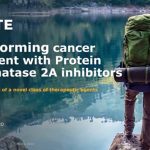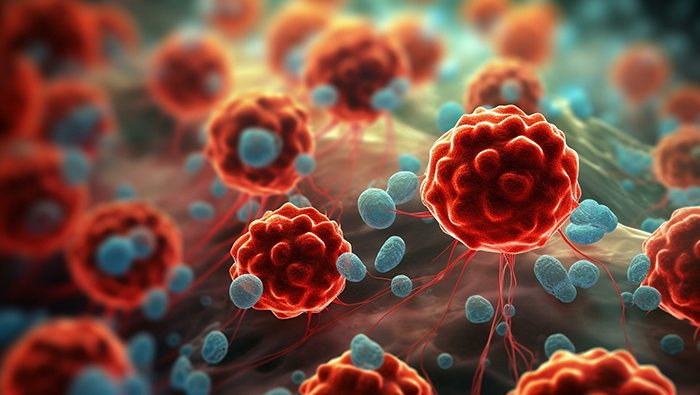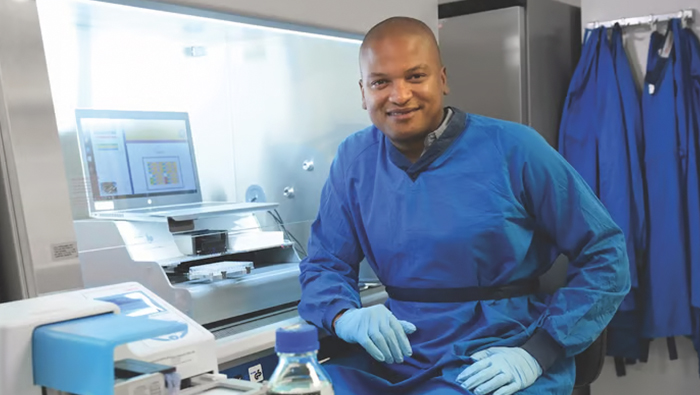
Podcast: First in Human Episode #59 featuring Bas van der Baan
April 11, 2024
Video: MedInvest Biotech and Pharma Conference Presentation
May 1, 2024Research Highlight | Published: 30 April 2024
Targeted Therapies | By Anna Dart

Many targeted cancer therapies work by inhibiting oncogenic signalling, but unfortunately their initial control of tumour growth is often followed by subsequent resistance, calling for alternative strategies. Increasing evidence suggests that there is an ideal level of oncogenic signalling conducive to tumour initiation and maintenance, and that deviations from this level might represent a vulnerability. Therefore, the group of René Bernards reasoned that intentional further activation of oncogenic signalling, rather than its inhibition, could represent an alternative strategy leading to cancer cell death.
To test this theory, Dias et al. leveraged LB-100, a small molecule inhibitor of the serine/threonine protein phosphatase 2A (PP2A) that has tumour-suppressor activity. Based on the activities of PP2A, it was expected that inhibition of PP2A would lead to increased mitogenic signalling. In this study, the authors confirmed that LB-100- induced toxicity is indeed associated with further activation of oncogenic pathways in a series of colorectal cancer (CRC) cell lines harbouring a variety of oncogenic muta- tions. Furthermore, this effect was accompanied by the engagement of stress and inflammatory response pathways that are most likely activated to enable the cancer cells to survive the stress associated with the heightened oncogenic activity.
Given the increased reliance on stress response pathways in the context of LB-100 inhibition, the authors surmised that targeting the stress response pathways might be synthetic lethal with hyperactivation of oncogenic signalling in causing cancer cell death. To explore this idea, the authors carried out custom, stress-focused drug screens on two CRC cell lines and identified inhibitors of the nature reviews cancer cell cycle regulators WEE1 and CHK1 as sensitizing to LB-100 treatment. Furthermore, genome-wide CRISPR knockout screens identified synthetic lethality between WEE1 loss and LB-100 in one of the CRC cell lines.
Since the development of clinical CHK1 inhibitors has largely ceased, subsequent experiments focused on inhibition of WEE1. The combined action of LB-100 and the WEE1 inhibitor adavosertib was shown to be synergistic in a varied set of CRC cell lines and also in a range of pancreatic ductal adenocarcinoma and cholangiocarcinoma cell lines, irrespective of a specific oncogenic driver mutation. Delving into the mechanism behind this synergy revealed that LB-100 and adavosertib combine to promote unscheduled and highly aberrant mitosis, leading to cancer cell death. Importantly these findings could be replicated in vivo. Orthotopic patient-derived xenograft models of metastatic colorectal tumours showed that LB-100 and adavosertib in combination exhibited greater anti-tumour activity than either drug alone — an effect that was also associated with histopathological regression and no off-tumour toxicity.
But how might cancer cells eventually acquire spontaneous resistance to LB-100 and adavosertib? CRC cells are typically aneuploid, but combination-resistant CRC cells displayed a reduced karyotype complexity, downregulation of oncogenic signalling and a transcriptional programme associated with decreased proliferation. Finally, these combination-resistant CRC cells only very occasionally formed small tumours when transplanted into immunocompromised mice. By contrast, parental cell lines consistently displayed steady tumour growth when similarly transplanted, suggesting that cancer cells escape this therapeutic regimen by suppressing the tumorigenic phenotype.
It will be interesting in the future to see if this mechanism of acquired resistance is universal across different cancer models and other drugs that activate oncogenic signalling.
See the full Nature Reviews Cancer article (PDF) >>
Original article: Dias, M. H. et al. Paradoxical activation of oncogenic signaling as a cancer treatment strategy. Cancer Discov. https://aacrjournals.org/cancerdiscovery/article/doi/10.1158/2159-8290.CD-23-0216/745111/Paradoxical-Activation-of-Oncogenic-Signaling-as-a (2024)



